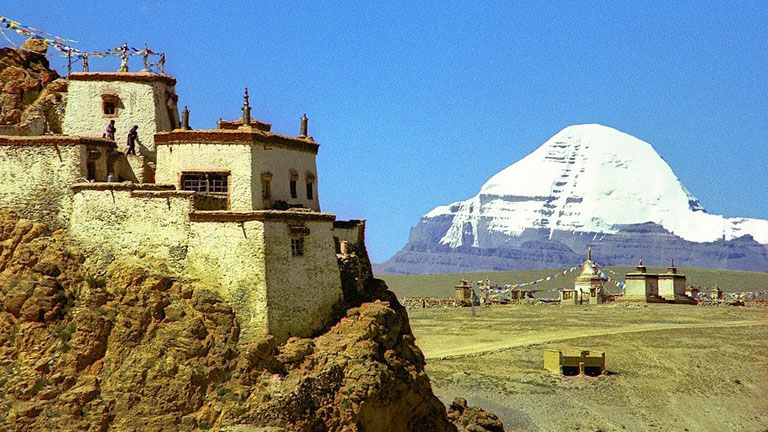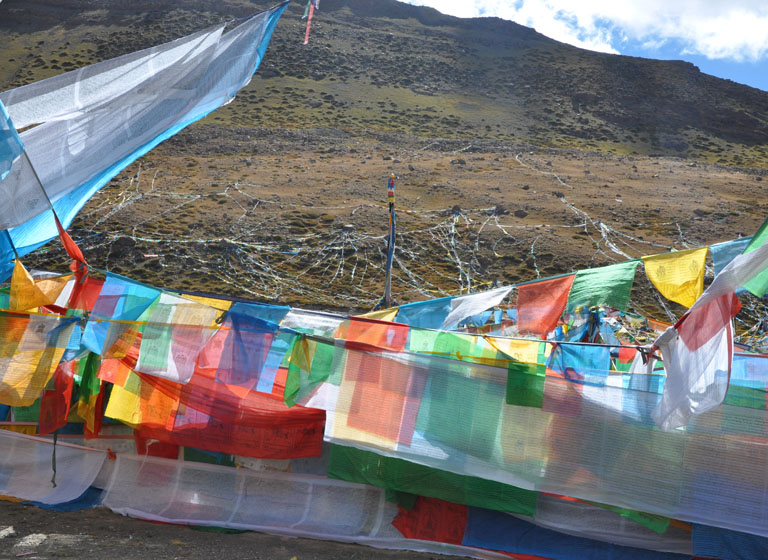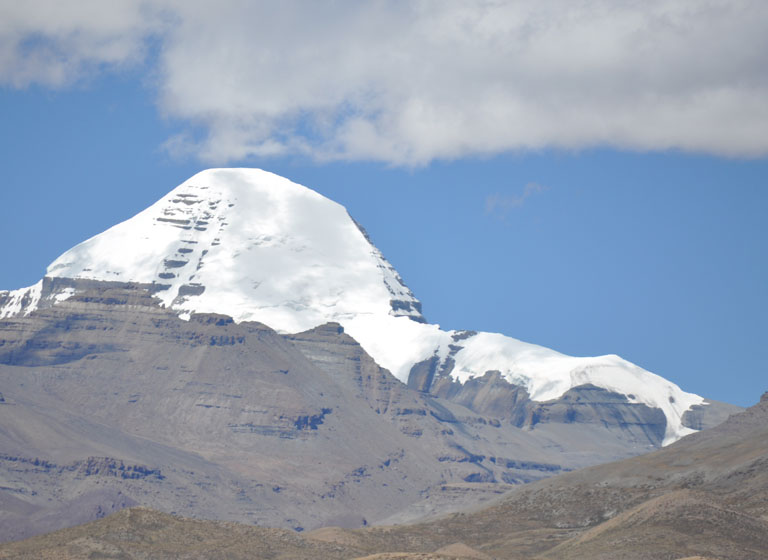Significance
The Significance of Kailas-Manasarovar
Kailas and Manasrovar are as old as the creation. The spiritual journey to Kailas-Manasarovar is also a ‘Maha Tirthayatra’.
The Indian scriptures reiterate that circumambulation (parikrama) around Kailas absolves the sins through generation. He can not only be with Siva but can ‘become’ Siva. If anyone bathes in the lake, he shall go to the paradise of Brahma and he who drinks its water shall go to the heaven of Siva and shall be released from the sins of a hundred births. Even the beast who bathes in Manasarovar shall go to the Paradise of Brahma. Its waters drops are like pearls.

For thousands of years, Hindus, Buddhists, Bonpos and Jains have been circumambulating the Divine Mountain with devotion and faith till date to attain salvation. Millions others also visit it with devotion. After completing the arduous journey, they feel happy and blessed. They never meditate over many subtle messages which Mount Kailas emits.

Importance of Kailas Kora (parikrama)
In Tibetan pilgrimage practice, Kora or circumambulating Mount Kailas is the most important as one Kora cleanses the sins of one life, 13 Koras cleans away the sins of one Kalpa (Era) and 108 Kora will give nirvana (enlightenment) in this life. The Kora also gives progress from birth to death and again to birth as per Buddhist wheel of life. One turn of life is in a transmuted form rather than a mundane form. Kora (parikrama) of holy Kailas by Hindus is referred to enter into mandala of Lord Siva of holy Kailas while Buddhists entered into mandala of Demchhog.
Every year one of the important festival ‘Saga Dewa’ is celebrated at Tarboche in Tibet at the foothills of Mount Kailas. Saga Dewa is celebrated every year on 15th day of 4th Lunar month (full moon) of the Tibetan calendar. In India, we celebrate ‘Buddha Purnima’ on that day. This auspicious day coincides with the important events of Lord Buddha’s birthday and the enlightenment day.

Year 2014 was the year of ‘Horse’ according to Tibetan pilgrimage practice. Horse year is very auspicious time to perform Kora. The Horse year comes after every 12 years and the next Horse year will take place in 2026. This year, long astronomical event is known as ‘The Great Horse Festival’ at Mount Kailas and starts from ‘Saga Dewa’ festival. According to Kalachakara Tantra, Godsang Gonpo introduced the system of Kora in Horse year. It is considered that Kailas becomes a ‘power place’ in this year. Maha Kumbh Mela is held in the Horse year at Mount Kailas just as the Hindu celebrate Kumbh Mela at Haridwar/Allahabad (India) and so on after every 12 years. Performing Kora around Mount Kailas in Horse year gives benefit of 13 Koras in any other year.
Buddhists and Hindus perform Kora clockwise of the holy Kailas, while ‘Bonpo’ a pre Buddhist, pilgrims perform anti-clockwise.

Some devotees are so pious and have such devotion that they perform ‘Dandavata Kora’ or prostrating themselves around Kailas crossing a height of 18600 ft. They lie flat on the ground, touching their hands on the uneven stony and icy pathway and standing again to lie flat on the pathway and repeating the process will circumambulate the holy Kailas. It takes more than 25 days to perform such type of Kora. The devotee will lie more than 21,000 times to perform such type of Kora. Some sick Tibetans hire beggars or porters to perform ‘Kora’ on their behalf. Some rich Tibetans get ‘Kora’ done for themselves or for the benefit and peace of their departed souls engaging beggars & coolies for which money and some sheep are paid as remuneration. A few Tibetans perform 54 km Kora in a single day as they do not have to carry load. Usually, Kora is performed in 3 days. Horse year is an important event for poor Tibetans and nomads also. They cannot come every year for a Kora at Mount Kailas. They save their valuable money and will not miss this event which comes after every 12 years.

Inner Kora
There is also an ‘Inner Kora’. As per Tibetan tradition, after completing 13 outer Koras, one can perform ‘Inner Kora’ and cross over the secret path of the ‘Dakani’. The tradition is important to Tibetans and get assurance from other not to violate the sanctity of the route. The purpose of more outer Kora is to clean and become pure. The purer you are, the more closer core of the holy Kailas and nearer to heaven pathway. The terrain perfection and acclimatization may be adherent secondary perfection.

